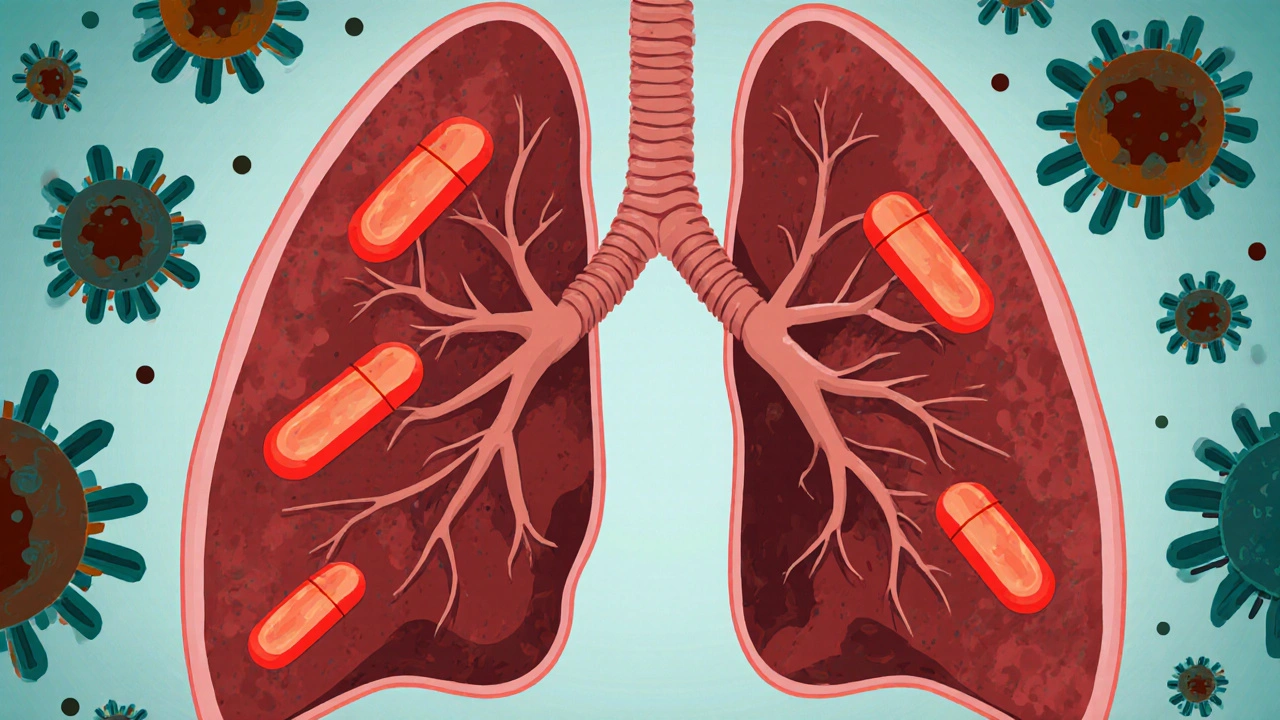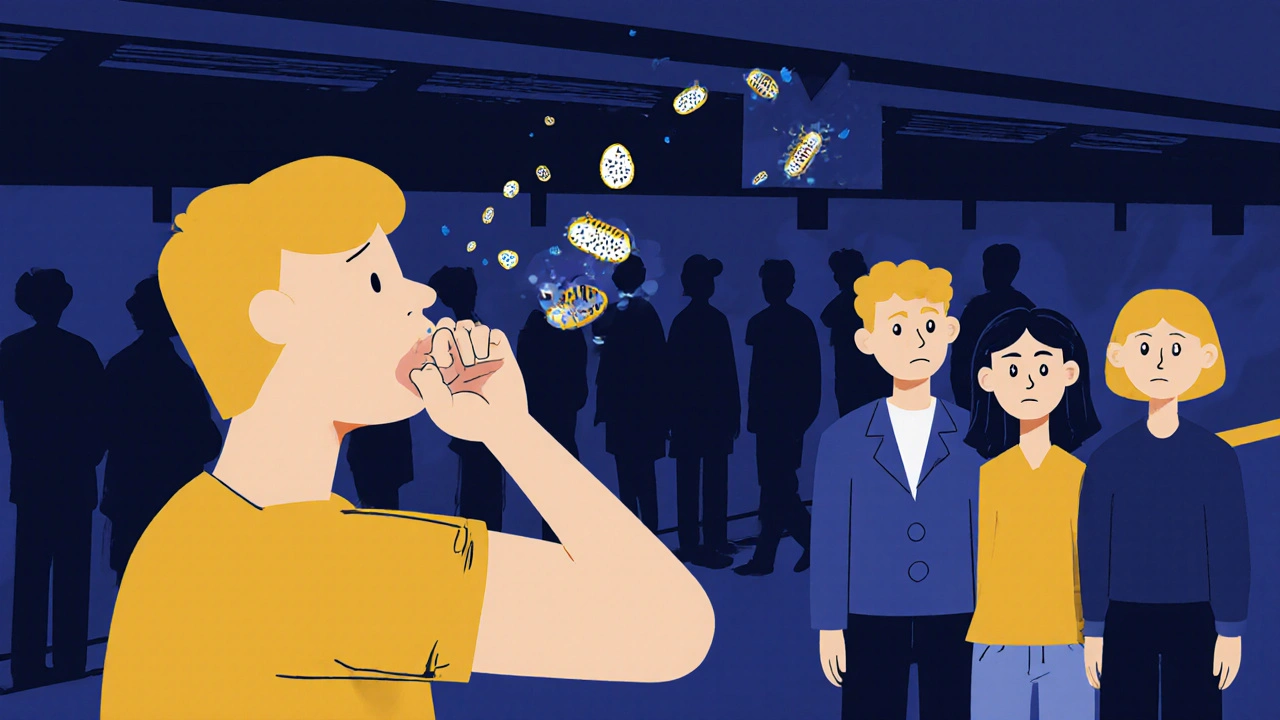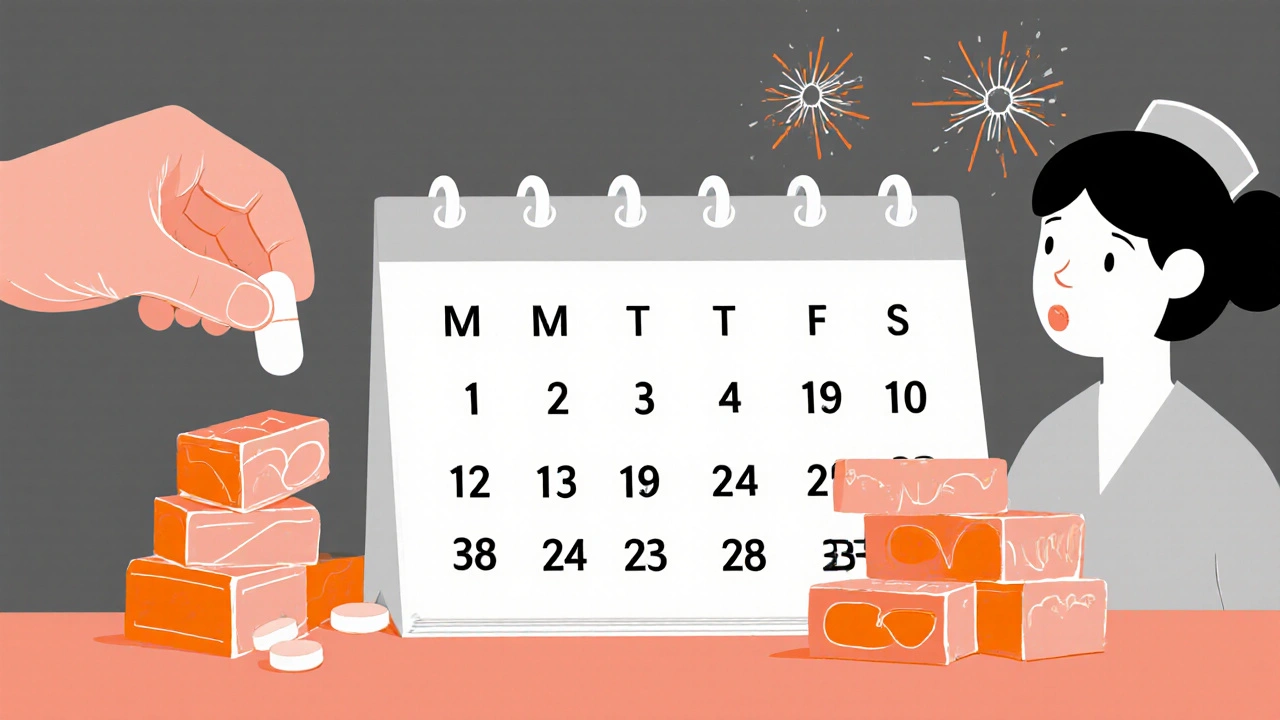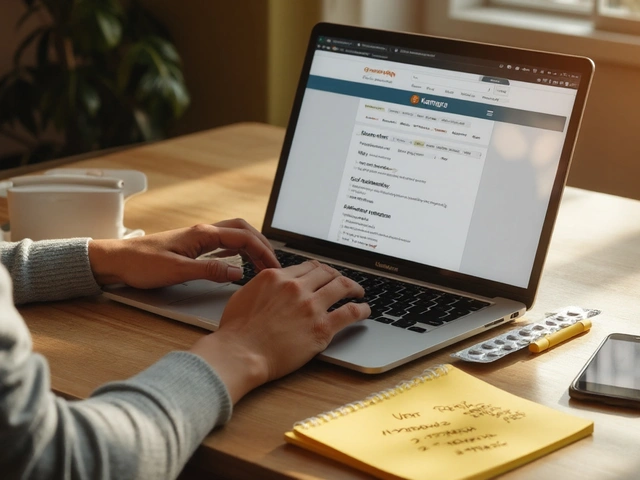
Most people who breathe in tuberculosis bacteria never get sick. That’s not because the bacteria disappeared-it’s because their body locked them away. This hidden form, called latent TB infection, affects nearly a quarter of the world’s population. But here’s the catch: without treatment, 1 in 10 of those people will eventually develop active tuberculosis, a serious, contagious illness that can kill. Understanding the difference between latent and active TB isn’t just medical trivia-it’s the key to stopping the spread and saving lives.
What Is Latent TB Infection?
Latent TB means the bacteria are alive but completely asleep. Your immune system has built walls around them-tiny clusters called granulomas-that keep the bacteria from multiplying. You feel fine. You don’t cough. You don’t spread it to anyone. You might not even know you’re infected unless you get tested.Testing for latent TB uses either a skin test (TST) or a blood test (IGRA). Both detect your body’s immune response to TB bacteria, not the bacteria themselves. A positive result means you’ve been exposed. A normal chest X-ray and no symptoms confirm it’s latent, not active.
People with latent TB can carry these dormant bacteria for decades. Some never wake them up. Others-especially those with weakened immune systems-will eventually develop active disease. The risk is highest in the first two years after infection, but it never fully goes away. HIV, diabetes, kidney failure, or taking immunosuppressant drugs like steroids or biologics can turn that quiet infection into a full-blown illness.
What Turns Latent TB Into Active Disease?
The immune system usually keeps TB in check. But when it weakens, the bacteria wake up. They start multiplying, destroying lung tissue, and spreading through the air. This is active tuberculosis.Active TB doesn’t come on suddenly. It creeps in. You might feel tired for weeks. Then you lose weight without trying. Nights get soaked with sweat. A low fever lingers. Finally, the cough starts-dry at first, then thick with phlegm. After three weeks, it’s time to see a doctor. If it gets worse, you might cough up blood. Chest pain follows. These are not minor symptoms. They’re red flags for active TB.
Unlike latent TB, active TB is contagious. When someone with pulmonary TB coughs, sneezes, or sings, they release tiny droplets into the air. Others nearby can breathe them in. One person with untreated active TB can infect 10 to 15 people in a year. That’s why early diagnosis and treatment aren’t optional-they’re urgent.
How Is TB Diagnosed?
Latent TB is found through screening. High-risk groups-like people who came from countries with high TB rates, healthcare workers, or those living in group settings-are tested regularly. A positive TST or IGRA, with no symptoms and a normal chest X-ray, equals latent TB.Active TB requires more than just a blood test. Doctors need proof the bacteria are multiplying. That means:
- At least three sputum samples tested for TB bacteria
- A positive nucleic acid amplification test (NAAT) that detects TB DNA in less than 24 hours
- A chest X-ray showing damage-usually in the upper lobes of the lungs
Some people have TB outside the lungs-lymph nodes, bones, kidneys. These cases are harder to diagnose and often need biopsies or fluid tests. But pulmonary TB, the kind that spreads, is the main focus of public health efforts.

Treatment for Latent TB: Preventing the Worst
Treating latent TB doesn’t cure you-it prevents you from ever getting sick. It’s simple, but it’s long. The standard is nine months of daily isoniazid. That’s 270 pills. Many people stop before finishing, which is dangerous. Stopping early can lead to drug-resistant TB.Thankfully, shorter options now exist:
- 3 months of once-weekly isoniazid and rifapentine (taken under direct observation)
- 4 months of daily rifampin
These regimens are just as effective and much easier to complete. The CDC and WHO now recommend them over the old nine-month course. Still, liver damage is a risk with all these drugs. Doctors check liver enzymes before and during treatment. If you feel nauseous, yellow-eyed, or unusually tired, tell your provider immediately.
Treatment for Active TB: The Four-Drug Fight
Active TB is treated with a powerful mix of four antibiotics for at least six months. The first two months are the most intense: isoniazid, rifampin, pyrazinamide, and ethambutol. This combo kills the fast-growing bacteria and prevents resistance.After two months, you drop pyrazinamide and ethambutol. You keep isoniazid and rifampin for another four to seven months. That’s 180 to 270 more pills. And here’s the critical part: you must take every single one. Missing doses lets the strongest bacteria survive. They mutate. They become resistant.
That’s where directly observed therapy (DOT) comes in. A nurse or community health worker watches you swallow each pill. It’s not about control-it’s about survival. DOT cuts the chance of drug-resistant TB by over 80%. In Australia, DOT is standard for all active TB cases. In many low-income countries, it’s still rare. That’s why multidrug-resistant TB (MDR-TB) is rising globally.
Side effects are common. Rifampin turns your urine orange. Pyrazinamide can cause joint pain. Isoniazid may cause nerve damage-so doctors often give vitamin B6 alongside it. Most people tolerate the drugs fine. But if you stop, you risk death or spreading a superbug.

Who’s at Highest Risk?
Not everyone is equally likely to develop active TB. Certain groups face much higher risk:- People with untreated HIV-up to 10 times more likely to progress from latent to active TB
- Children under five-their immune systems can’t contain the bacteria well
- People with diabetes, kidney disease, or cancer
- Those on immunosuppressive drugs like TNF inhibitors
- People living in crowded conditions-prisons, shelters, refugee camps
- Foreign-born individuals from countries with high TB rates
In Australia, most TB cases are in people born overseas. That’s why screening programs target new arrivals. In the U.S., over half of cases occur in foreign-born residents. TB doesn’t care about borders-it follows people.
Why This Matters Now
TB is not a disease of the past. In 2023, it killed over 1.2 million people worldwide. It’s still one of the top 10 causes of death. The good news? We know how to stop it. Treat latent TB before it becomes active. Diagnose active TB fast. Give the full course of drugs. Watch people take them.But progress is slow. Funding is low. Drug resistance is growing. And too many people still don’t know they’re infected. That’s why testing high-risk groups matters. That’s why public health programs matter. That’s why finishing your pills matters.
TB is not just a medical problem. It’s a social one. Poverty, overcrowding, lack of access to care-they all feed the fire. Fixing it means more than medicine. It means equity. It means listening to people who’ve been ignored.
But if you’re reading this, you now know the basics. You know the difference between sleeping bacteria and active disease. You know how to stop it. That’s more than most people have. Use that knowledge.
Can you catch TB from sharing a cup or touching surfaces?
No. TB spreads only through the air when someone with active pulmonary TB coughs, sneezes, or talks loudly. You can’t get it from sharing drinks, utensils, or touching doorknobs. The bacteria don’t survive long on surfaces.
If I’ve had TB before, can I get it again?
Yes. Having TB once doesn’t give you lasting immunity. You can be reinfected with a new strain or reactivate a dormant infection if your immune system weakens. That’s why follow-up care and monitoring matter even after treatment.
Are TB drugs safe during pregnancy?
Yes. Isoniazid, rifampin, and ethambutol are considered safe during pregnancy. Pyrazinamide is used when needed, with monitoring. Untreated TB is far more dangerous for both mother and baby than the medications. Always consult your doctor-do not stop treatment.
Why does TB treatment take so long?
TB bacteria grow slowly and hide in hard-to-reach areas of the body, like lung cavities. Some are dormant and don’t respond to drugs until they wake up. A short course kills only the active ones, leaving the rest to multiply later. Long treatment ensures every last bacterium is wiped out.
Can latent TB turn into active TB without symptoms?
No. By definition, latent TB has no symptoms. When it becomes active, symptoms appear-cough, fever, weight loss, night sweats. If you feel fine and have no symptoms, you still have latent TB, not active disease. But without treatment, symptoms will eventually come.
Is there a vaccine for TB?
Yes, the BCG vaccine is used in many countries with high TB rates, especially for infants. It protects against severe forms like TB meningitis in kids but doesn’t reliably prevent lung TB in adults. It’s not used in Australia or the U.S. because TB rates are low and the vaccine can interfere with TB skin tests.
What Comes Next?
If you’ve been diagnosed with latent TB, start treatment. Don’t wait. If you have symptoms-cough for more than three weeks, weight loss, night sweats-get tested now. Don’t assume it’s just a cold or the flu. TB doesn’t care how healthy you think you are.If you’re a healthcare worker, screen your patients. If you’re from a high-risk country, get tested when you arrive. If you’re caring for someone with TB, make sure they take every pill. This isn’t just about one person. It’s about stopping the chain before it spreads.
TB is beatable. But only if we act-not just as patients, but as communities. Knowledge is power. And right now, you have it.
Nikhil Purohit
Man, I never realized how many people carry TB without even knowing. I’m from India, and my uncle had it years ago-barely talked about it. But now I get why testing new arrivals is so crucial. We can’t ignore this just because it’s not ‘glamorous’ like cancer or COVID.
Shawn Sakura
sooo many ppl dont finish their meds and then we get drug resistant tb??? like??? bro just take the pills. i know it’s boring but imagine your grandkid gets a superbug bc you skipped a week. please. just. take. the. pills.
Florian Moser
Shawn, you’re absolutely right. Completing treatment isn’t just personal-it’s communal responsibility. The shorter regimens (3-month isoniazid-rifapentine) are game-changers. If your clinic still pushes the 9-month course, ask why. Progress is here. We just need to use it.
Michael Marrale
Wait… so the government knows about latent TB but doesn’t test everyone? Hmm. I think they’re hiding something. Why only test immigrants and healthcare workers? What if they’re using TB to track people? I heard the BCG vaccine has microchips. I’m not joking. Look up Project Nightingale. 🤔
David vaughan
I just got my IGRA result back… positive. 😅 I didn’t even feel sick. I’m so relieved it’s latent. I’m starting the 3-month combo next week. Thank you for this post. I didn’t know I was at risk. I’m going to tell my roommate. And my dog. He’s probably worried too. 🐶
Kartik Singhal
Wow. Another ‘public health hero’ article. So we’re supposed to trust the WHO and CDC blindly? Latent TB? Please. It’s just a way to push pharma profits. 270 pills? That’s not medicine-that’s corporate control. 🤡 And why is everyone so scared of a disease that mostly kills the poor? Wake up.
Logan Romine
So let me get this straight… we spend billions to treat a disease that mostly affects people who can’t afford to be sick… while we fund space tourism? 🤔 The real TB is capitalism. The bacteria? Just a symptom. Also, I’ve had a cough for two weeks. Should I be worried? Or is this just my soul screaming into the void? 🌌
Mark Kahn
David, congrats on starting treatment! You’re doing amazing. And Shawn, your comment about your uncle? That’s exactly why we need to talk about this. No shame. No silence. Just action. You got this.
Leo Tamisch
How quaint. A treatise on tuberculosis as if it were a Shakespearean tragedy. Yet we still lack universal screening, equitable access, and true global solidarity. The BCG vaccine? A Band-Aid on a hemorrhage. The real tragedy isn’t the bacteria-it’s our moral complacency. 🌍🩺






Write a comment